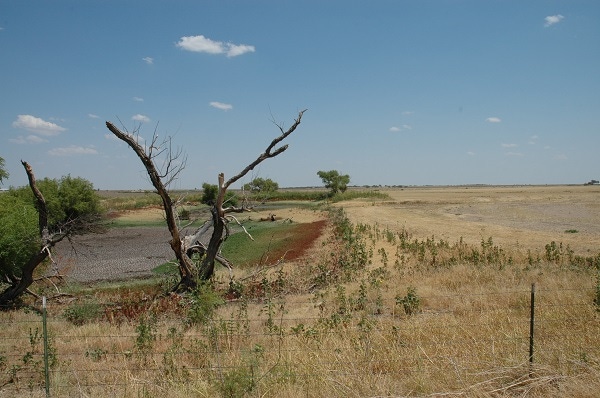
Extreme climate and weather changes are part of our planet's history—not just the seasonal changes we experience each year, but major transformations that have changed the face of the earth over millions of years, like ice ages and extreme droughts, mega-storms and tidal waves, massive volcanic activity and even collisions with extraterrestrial bodies.
Earth science is certainly a complicated thing, and while we have learned a great deal about it in recent years, we still have a lot to learn.
When it comes to our complicated climate, forget about the causes for a moment, whether they are triggered by human action or are naturally occurring. They are simply a fact of life. Change happens, and it always has, and no doubt always will.
Scientists tell us that if we can agree that change is certain, the next step in our own enlightenment is realizing that not all change is welcome. A recent study indicates that unless we find ways to slow down or avert predicted changes in our not-too-distant future, the consequences could be devastating.
We don't have to look very far into our recent past to know how devastating drought can be. Earlier this century we experienced a terrible drought that cost agriculture alone billions of dollars worldwide. Not long before that there were the Dust Bowl years, and before that periods of drought and other types of extreme climate change.
But now we are being told that we may well be on the threshold of another possible period of extreme drought, one that could be worse than any of those in our immediate past.
PREDICTING THE FUTURE OF CLIMATE CHANGE
The new study predicts that even though we are still dealing with extremely parched conditions, the U.S. Southwest faces the threat of mega-droughts this century as temperatures rise. But the study indicates that the risk of such a mega-drought can be reduced if heat-trapping gases are curbed.
Oppressive dry spells lasting at least two decades have gripped the Southwest in the distant past, but scientists are now saying these future mega-droughts would likely be hotter and more severe, putting an impossible strain on our limited water resources.
The study, published this month in the Journal Science Advances, is the latest to find that droughts more extreme than what is currently being experienced could become more common as a trend if a warming, drying planet continues.
To be exact, using computer modeling, researchers calculated between a 70 percent and 90 percent chance that the Southwest will experience a mega-drought later this century. To complicate matters, if precipitation is below normal, the risk jumps to 99 percent—"virtually certain," said lead researcher Toby Ault of Cornell University.
Scientists involved in the study offer some good news, however. If countries follow through with the Paris climate agreement to reduce emissions from the burning of coal, natural gas and oil to limit global temperature rise to well below 2 degrees Celsius (3.6 degrees Fahrenheit), then the risks are cut nearly in half.
ODDS INCREASING
"The likelihood of a mega-drought is already increasing, and that risk will continue to go up as long as temperatures keep rising," Ault reports.
The Colorado River basin, which spans parts of Arizona, California, Colorado, New Mexico, Nevada, Utah, Wyoming and Mexico, has been in the midst of a historic drought for the past 16 years. Levels at Lake Mead are now surrounded by a distinctive white mineral "bathtub ring" showing the 130-foot drop in water levels since the beginning of the regional drought.
California is also facing an historic and ongoing drought, and has imposed mandatory statewide cuts on water usage that left brown lawns and fallowed fields all across the region. Restrictions have since eased with local water districts taking control of conservation efforts. But recently state regulators said some water districts are not conserving enough water to avoid additional drought problems.
The new forecasts of a future mega-drought are frightening according to Jonathan Overpeck, a University of Arizona climate scientist. He says based on studies of tree rings and other data, past mega-droughts across the Southwest have lasted up to 35 years.
"It is important to realize that future droughts will be much hotter, and thus the impacts of these droughts will be much more severe," he predicted.
OTHER CLIMATE FACTORS
While climate factors will largely determine the seriousness of future droughts, forecasters warn that mega-drought probabilities based on precipitation alone tend to underestimate risk. Global drying and warmness could be affected by other climate events, such as recurring ocean-atmosphere climate interactions, like El Niños and La Niña events.
While predicting these types of interactions have improved greatly in recent years, they remain far from being a perfect science. For instance, a La Niña event predicted to develop this fall and winter season by NOAA now remains only a possibility.
While the science behind accurate forecasting will continue to change and evolve, scientists warn that, as with most everything else in the physical world, change is inevitable. To what extent and exactly what impact these changes will cause remains the big question.
About the Author(s)
You May Also Like




